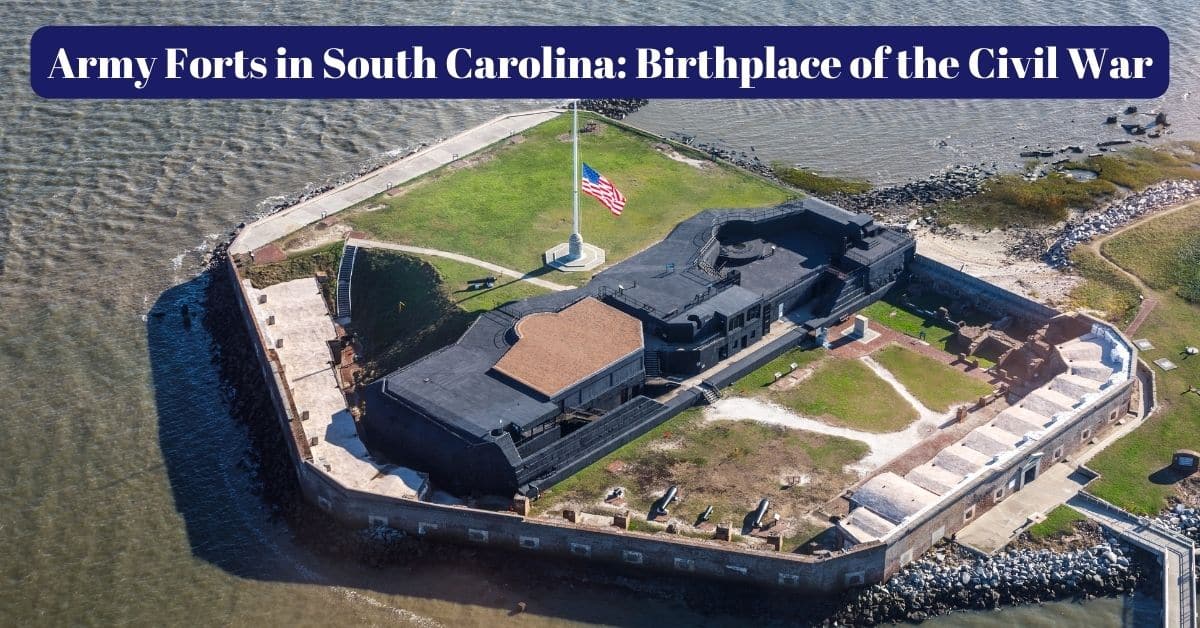South Carolina has a fascinating history of military installations, particularly those associated with the United States Army. Fort Jackson, as an example, is an Army fort located within the city of Columbia, South Carolina, and has been in use since 1917.
Fort Jackson is named in honor of Andrew Jackson, the seventh President of the United States and a U.S. Army General. Moreover, Fort Jackson plays a pivotal role in the Army’s Basic Combat Training (BCT) operations, making it an essential component of the U.S. military’s infrastructure.
In addition to Fort Jackson, South Carolina has several military bases catering to the Army’s training and command purposes. These bases, which vary in their establishment history, also contribute to the state’s military importance within the nation.
Given the strategic placement of these installations, South Carolina has often played a crucial role in ensuring military readiness and capabilities for the United States Army.
Exploring the Army forts in South Carolina provides a deeper understanding of the military’s presence in the region and its impact on both the local and national levels.
This examination highlights the essential contributions these installations make to the armed forces and the role they continue to play in maintaining the strength and preparedness of the United States Army.
Historical Background of Forts in South Carolina
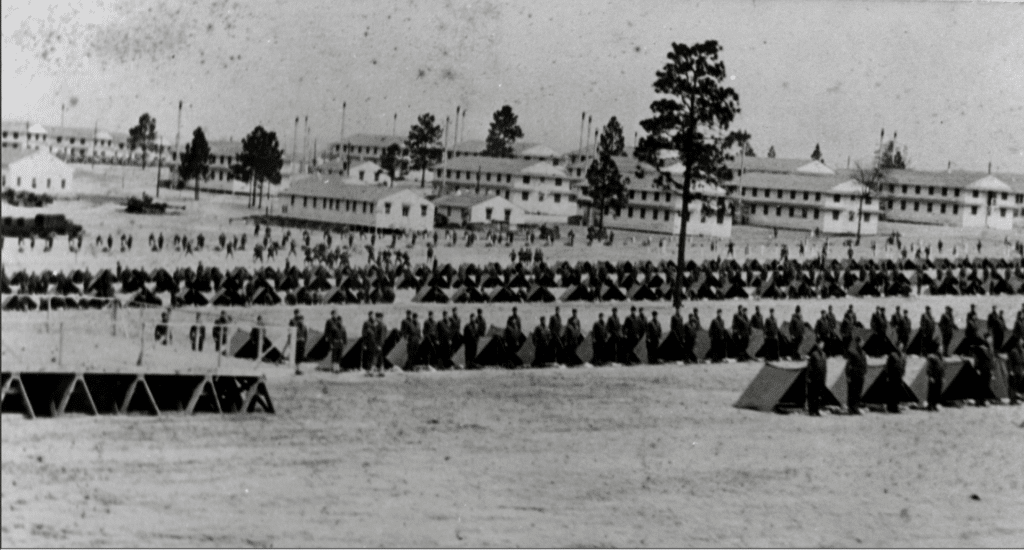
South Carolina has an array of military installations, including forts and bases, from the American Revolution to the present day.
Fort Jackson was one of the most significant army forts in the state’s history, established in 1917 and named after the U.S. Army General and the seventh U.S. President, Andrew Jackson.
Fort Jackson, located in Columbia, South Carolina, is an active initial entry training center for the U.S. Army. The base has played a crucial role in training new recruits for various conflicts, including World War II, the Korean War, and current military operations.
Beyond Fort Jackson, South Carolina has been home to several notable forts and bases throughout history, such as Fort Sumter, Fort Moultrie, and Port Royal.
During the Civil War, vital military installations like Fort Sumter and Fort Moultrie were the sites of significant events. Fort Sumter, situated in Charleston Harbor, is known for being where Confederate forces fired the first shots of the Civil War in April 1861.
On Sullivan’s Island, Fort Moultrie was crucial in defending Charleston Harbor from Union forces.
Other Military Branches
In addition to army forts, South Carolina is home to Marine Corps and Air Force bases. The Marine Corps Air Station Beaufort, also known as MCAS Beaufort, and Parris Island are important Marine bases in the area.
Parris Island serves as the main recruit depot for the United States Marine Corps East Coast, and MCAS Beaufort is an active-duty station housing the Marine Aircraft Group 31.
South Carolina’s military facilities also encompass joint bases, such as Charleston’s Joint Base, which is home to the 628th Air Base Wing and hosts both Air Force and Navy units.
Other notable installations include Shaw Air Force Base, located in Sumter, and Naval Weapons Station Charleston, supporting various military members and operations on the East Coast.
Throughout history, South Carolina’s military installations and forts have played essential roles in various conflicts, from the American Revolution to modern military operations.
These bases, such as Fort Jackson, serve as vital training facilities for active-duty soldiers and contribute to the state’s rich military heritage.
Significant Army Forts in South Carolina
Some of the most notable army forts in the region are Fort Jackson, Fort Sumter, and Fort Moultrie. Their contributions to the United States military and their role in various wars help cement their importance.
Fort Jackson
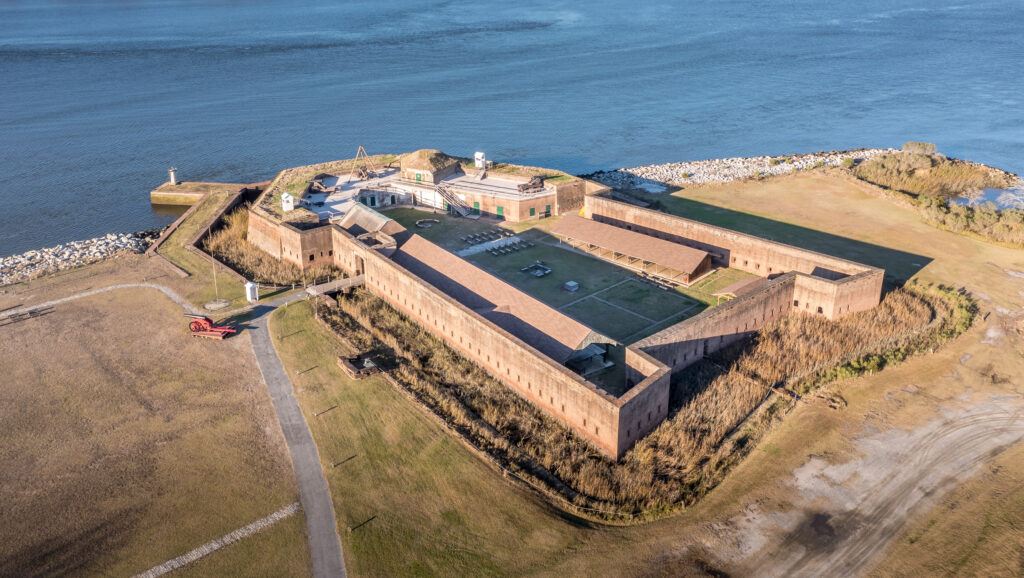
Fort Jackson, located in Columbia, South Carolina, is the largest and most active initial entry training center in the United States Army. The base has been in use since 1917 and was named after Andrew Jackson, the seventh president of the United States, who was a South Carolina native.
Its primary mission is to provide basic combat training to Army recruits, and it trains around 50% of all soldiers and 60% of women entering the Army each year.
The base covers approximately 53,000 acres and employs almost 3,500 civilians. It provides services for more than 46,000 retirees and their family members.
The fort also hosts an additional 10,000 students annually at various institutions located on the base. These include the Soldier Support Institute, Armed Forces Chaplaincy Center, National Center for Credibility Assessment, and Drill Sergeant School.
Fort Jackson has a proud history of supporting the U.S. Army during the conflict. Since its establishment, the base has trained soldiers for World War I and II, as well as the Korean War, the Vietnam War, and the Gulf War.
It continues to play a crucial role in shaping recruits for military service and preparing them for the challenges ahead.
Fort Sumter
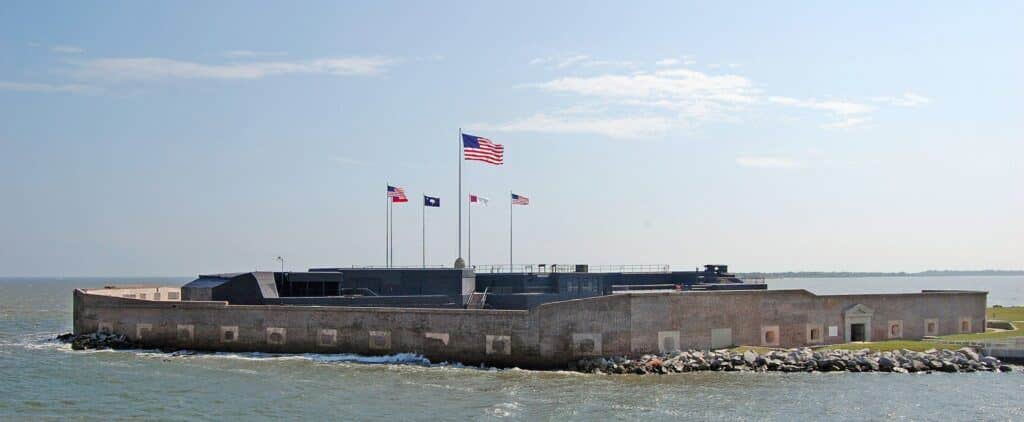
Fort Sumter is a sea fort on an artificial island in Charleston Harbor, South Carolina. The fort is famous for two critical battles during the Civil War.
It was initially constructed in 1829 as part of the Third System, a grade of structural integrity, after the War of 1812. The fort was designed to protect the city of Charleston from naval invasion.
The first battle of Fort Sumter occurred on April 12, 1861, when Confederate forces attacked the fort, which was then held by Union troops. The battle lasted for two days and resulted in the surrender of the Union forces.
The battle marked the beginning of the Civil War, and the fort remained under Confederate control for the next four years.
In 1865, Union forces regained control of the fort after a long siege, and it became a symbol of the Union’s victory over the Confederacy.
The fort was left in ruins after the war, and although there was some rebuilding, it is primarily a replica of the original structure.
Today, Fort Sumter is managed by the National Park Service and serves as a historical reminder of its pivotal role in the Civil War. The fort is part of the Fort Sumter and Fort Moultrie National Historical Park, which also includes nearby Fort Moultrie.
Visitors can take a ferry to the fort to explore the museum and learn about the fort’s history.
Fort Moultrie
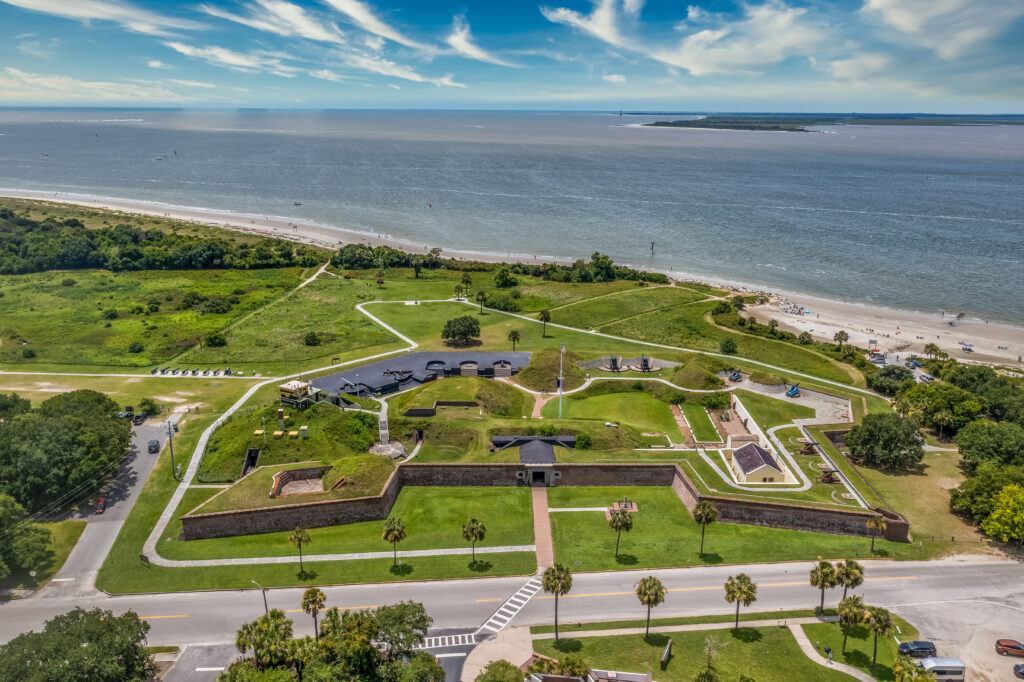
Fort Moultrie is a historic fort on Sullivan’s Island near Charleston, South Carolina. The fort played a significant role in American history, serving as a key defensive position during the American Revolution, Civil War, and World War II.
Named after its commander, William Moultrie, the fort was first constructed in 1776 to protect Charleston Harbor from British naval attacks.
During the American Revolution, British forces attempted to capture the fort twice. Still, they were repelled by Moultrie and his men, who successfully defended the fort and secured a crucial victory for the American colonists.
Civil War
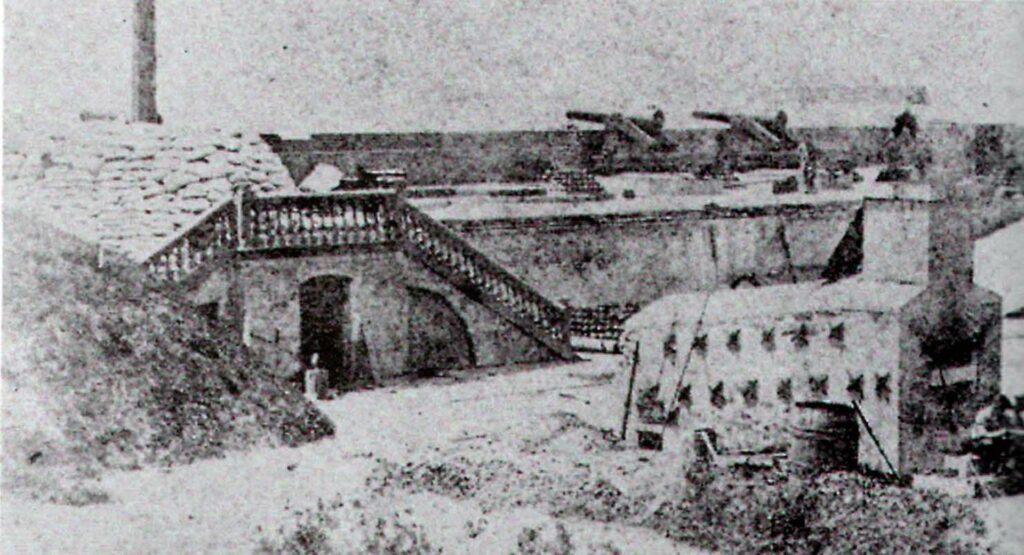
In the Civil War, Confederate troops used Fort Moultrie to protect Charleston Harbor. The fort was heavily armed and played a crucial role in the city’s defense.
In 1863, Union forces attempted to capture the fort but were unsuccessful. The fort remained under Confederate control until the end of the war.
World War II
During World War II, Fort Moultrie became part of the Harbor Defense Network, designed to protect the east coast of the United States from potential attacks by enemy forces.
Fort Moultrie was equipped with modern weaponry, including anti-aircraft guns and searchlights. It also was a strategic location, and advanced technology made it a vital component of the defense system.
Modern Times
Today, Fort Moultrie is managed by the National Park Service and is part of the Fort Sumter and Fort Moultrie National Historical Park. Visitors can explore the fort and learn about its rich history through exhibits and interpretive programs.
The fort’s unique location and versatile history make it an essential part of American history and a must-visit destination for history buffs and military enthusiasts.
Other Military Installations in South Carolina

In addition to these iconic army forts, South Carolina hosts a Joint Base Charleston, including Charleston Air Force Base, Naval Weapons Station Charleston, and Marine Corps Air Station Beaufort.
These military installations support the armed forces and contribute to the local economy and communities.
Modern Army Installations
South Carolina is home to several modern military installations, including the prominent Army base known as Fort Jackson.
Located near Columbia, Fort Jackson is the United States Army’s most extensive training base. It is the primary location for Basic Training, hosting roughly 50% of all new recruits.
Another significant military installation in the state is the Marine Corps Air Station Beaufort in Port Royal. This base is the Atlantic fixed-wing home for the Marine Corps assets and is crucial to the country’s military infrastructure.
MCAS Beaufort hosts a variety of units, including the Marine Aircraft Group 31 (MAG-31) and multiple Marine Fighter Attack Squadrons.
Preservation and Tourism of South Carolina’s Army Forts
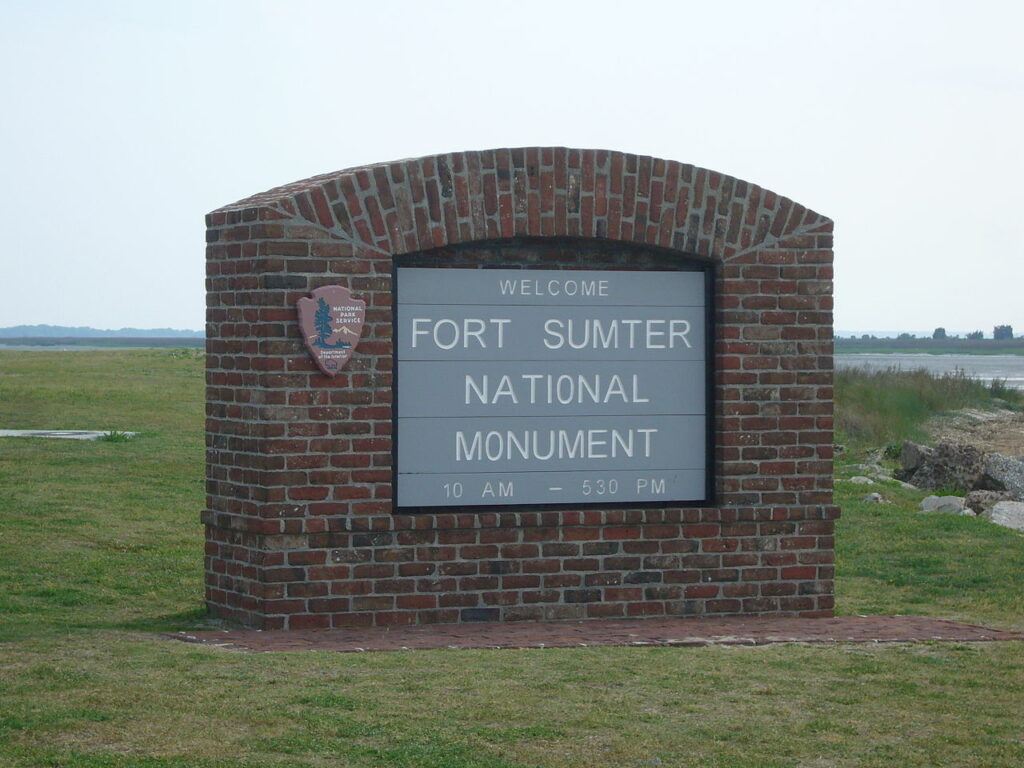
South Carolina has a rich military history dating back to the American Revolution and Civil War. Today, preservation and tourism initiatives focus on the various army forts and military installations in South Carolina, such as Fort Jackson, Fort Moultrie, and Fort Sumter.
Fort Jackson, the most extensive military base in the state, serves as an active initial entry training center for U.S. Army basic training. It’s located near Columbia and has a long history dating back to World War II.
While Fort Jackson is an active-duty installation, visitors can attend events and ceremonies related to military operations.
Fort Sumter and Fort Moultrie are located in Charleston Harbor and played significant roles during the Civil War. The National Park Service manages these historic sites, offering visitors a chance to explore and learn about their importance during the conflict between Union and Confederate forces.
The American Battlefield Trust
The American Battlefield Trust also worked to preserve Fort Lamar, a crucial Confederate stronghold, during the Battle of Secessionville in 1862.
Other notable South Carolina military sites include Port Royal, home to the Marine Corps Air Station (MCAS) Beaufort, and Parris Island, the main recruit depot for the United States Marine Corps on the East Coast.
Both locations hold significance for military members and their families and tourists interested in military history.
Active military facilities such as the 628th Air Base Wing in Charleston and the Air Combat Command’s Shaw Air Force Base near Sumter contribute to South Carolina’s military heritage, providing essential support to military operations and housing military members and their families.
Protecting Historic Landmarks
In addition to the preservation of historic forts, several organizations in South Carolina work to protect and maintain military monuments and battlegrounds.
The South Carolina Battleground Preservation Trust is one such organization dedicated to safeguarding historic military sites like Fort Fair Lawn, an American Revolutionary War fortification in Berkeley County.
Visitors can experience the rich history and stories of military bases, forts, and battlegrounds in South Carolina, from the brave actions of Andrew Jackson during the Battle of Fort Liberty to the critical roles played by black soldiers during the Civil War at Fort Wagner on Morris Island.
South Carolina’s military heritage continues to be honored and remembered through the efforts of preservation and tourism initiatives spread across the state.
Conclusion – Army Forts in South Carolina
Over the years, South Carolina’s military bases and forts have supported military personnel and their families, directly contributing to the development and well-being of local communities.
Today, these installations have become part of the larger story of sacrifice, commitment, and honor displayed by the men and women in the US military forces.

Cory is a website owner and content creator who enjoys fishing, history, coin collecting, and sports, among other hobbies. He is a husband and father of four.
Romans 15:4 For whatever was written in former days was written for our instruction, that through endurance and through the encouragement of the Scriptures we might have hope.

